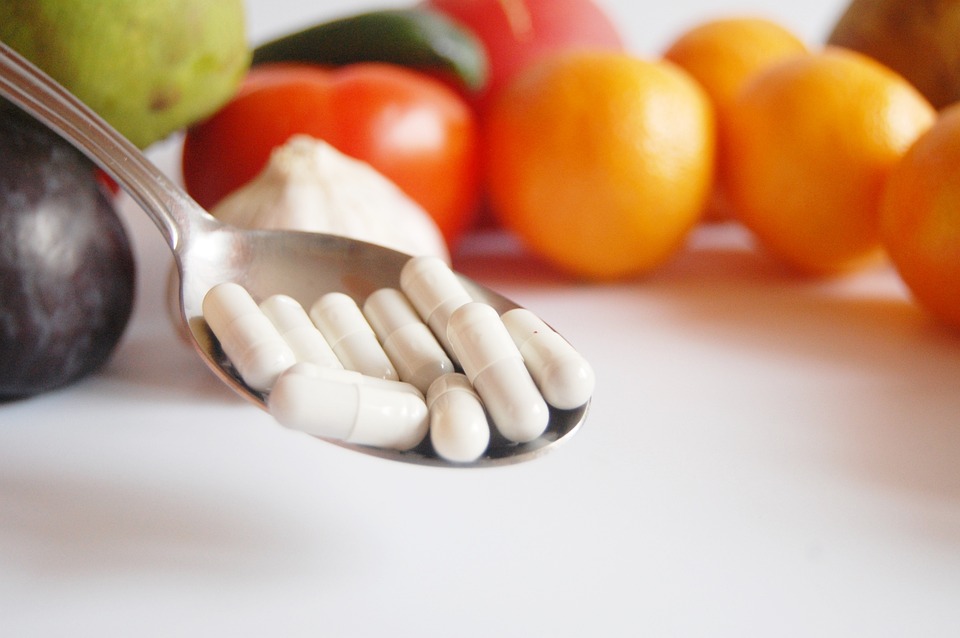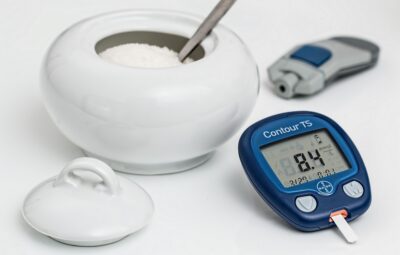It’s not breaking news that vitamins and minerals are essential to good health. Most of us have been told that since we were in diapers.
Heck, even Lucky Charms brags about being “fortified with 12 essential vitamins and minerals.” So they must be important!
But why, exactly?
How many vitamins and minerals are there, and what do they actually do? What foods contain them? And if you have a deficiency, how do you know.
We’ve got your answers!
In this article, you’ll learn:
- What vitamins and minerals are
- Why we need them to stay healthy
- How you absorb and use them
Plus, we’ll give you a complete list of all the vitamins and minerals, what they do, how much you need, signs of deficiency, and what foods to get them from.
What Are Vitamins?
Vitamins are organic compounds that the body needs for normal growth and activity. They can often be obtained from eating a well-balanced diet that contains a variety of plant and animal foods.
Basic Vitamin Functions
Vitamins serve many functions in the body. Some, like vitamin D, affect mineral metabolism while vitamin C may function as an antioxidant. The presence of adequate amounts of vitamins in a person’s body is essential for good health. One of the most important things they do is when they act as coenzymes.
Coenzymes enhance the action of enzymes and help carry out reactions in the body, for example, contracting a muscle.
Vitamin Deficiency
Poor diets and mal-absorption disorders may lead to vitamin deficiencies. Deficiencies in vitamins can often lead to unwanted health conditions such as rickets, scurvy, and pernicious anaemia. All these conditions may be preventable through proper supplementation.
Characterization Of Vitamins
- Fat-soluble vitamins are absorbed with dietary fat. If we don’t eat enough dietary fat, we don’t properly absorb these vitamins. That’s why a very low-fat diet can lead to deficiencies of fat-soluble vitamins. We can excrete fat-soluble vitamins through our poop, but we can also store them in our fatty tissues. Fatty tissues include things like body fat stores, but also cell membranes, which are made up of fat. Because we store them, we don’t necessarily have to eat these vitamins every day.
- Water-soluble vitamins don’t require fat to be absorbed. However, they’re also generally not stored in high amounts in the body and can be excreted in the urine. As a result, we need to eat them more often.
Water-soluble vitamins
Vitamin B1 (Thiamine)
- Vitamin B1 is involved in producing energy, as well as synthesizing DNA and RNA, the nucleic acids that carry our genetic material.
- Vitamin B1 Food Sources: Sunflower seeds, asparagus, lettuce, mushrooms, black beans, navy beans, lentils, spinach, peas, pinto beans, lima beans, eggplant, Brussels sprouts, tomatoes, tuna, whole wheat, soybeans
Vitamin B2 (Riboflavin)
- Vitamin B2 helps produce red blood cells and metabolize toxins in the liver. (It’s also what turns your pee bright yellow when you take a multivitamin!)
- Vitamin B2 Food Sources: Almonds, soybeans / tempeh, mushrooms, spinach, whole wheat, yogurt, mackerel, eggs, liver
Vitamin B3 (Niacin)
- Vitamin B3 plays a role in repairing DNA, keeping nerves healthy, and controlling cholesterol levels.
- Vitamin B3 Food Sources: Mushrooms, asparagus, peanuts, brown rice, corn, green leafy vegetables, sweet potato, potato, lentil, barley, carrots, almonds, celery, turnips, peaches, chicken meat, tuna, salmon
Vitamin B5 (Pantothenic acid)
Vitamin B5 helps to form acetyl-CoA, an important molecule involved in energy production. It also helps keep skin healthy.
Vitamin B5 Food Sources: Broccoli, lentils, split peas, avocado, whole wheat, mushrooms, sweet potato, sunflower seeds, cauliflower, green leafy vegetables, eggs, squash, strawberries, liver
Vitamin B6 (Pyridoxine)
- Pyridoxine is required for fat and carbohydrate metabolism. It helps in the production of red blood cells and supports nerve function. Sources Dried yeast, liver, organ meat, whole grains, and legumes are the main sources of vitamin B6. RDA The recommended dietary allowance for vitamin B6 is 1.5 milligram for women and 1.7 milligram for men is the recommended daily allowance.
- Vitamin B6 Food Sources: Whole wheat, brown rice, green leafy vegetables, sunflower seeds, potato, garbanzo beans, banana, trout, spinach, walnuts, peanut butter, tuna, salmon, lima beans, chicken
Vitamin B7 (Biotin)
- Vitamin B7 helps in the metabolism of carbohydrates and fats. Sources Liver, kidney, egg yolks, fish, milk, yeast, nuts, and legumes are the sources for vitamin B7. RDA The recommended dietary allowance for vitamin B7 is 30 micrograms is a good amount to take every day.
Vitamin B9 (Folate / Folic acid)
- Folate helps to form new proteins and is also involved in fetal development.
- Folate refers to the naturally occurring form found in foods. Folic acid is the synthetic form of the vitamin, used in most supplements and fortified foods.
- Vitamin B9 Food Sources: Green leafy vegetables, asparagus, broccoli, Brussels sprouts, citrus fruits, beans and legumes, whole grains, green peas, avocado, peanuts, organ meats
Vitamin B12 (Cobalamin)
- Vitamin B12 is involved in DNA synthesis, and also helps to form and maintain healthy blood and nerve cells. Vitamin B12 needs “intrinsic factor” (a compound secreted by the stomach during digestion) to be absorbed. We can store decades worth of this vitamin in our body—but it should still be consumed regularly.
- Vitamin B12 Food Sources: Liver, trout, salmon, tuna, haddock, egg, dairy. Vitamin B12 isn’t found in plant foods.
Vitamin C (Ascorbic acid)
- Vitamin C is probably most famous for its role in supporting the immune system. However, it also helps build collagen, keeping skin and joints healthy; synthesize norepinephrine, an adrenal hormone; and metabolize cholesterol.
- Vitamin C Food Sources: Most (fresh, raw) colorful fruits and vegetables
Fat-soluble vitamins
Vitamin A (Retinoids and carotenoids)
- Vitamin A helps to maintain normal vision and healthy skin. Sources Vitamin A is found in milk, cheese, liver, kidney, cream and fish liver oil. RDA The recommended dietary allowance for vitamin A is 700-900 micrograms. For pregnant and nursing women it is 1300 micrograms.
- Vitamin A Food Sources: Liver, egg yolks, carrots, sweet potato, pumpkin, green leafy vegetables, squash, cantaloupe, bell pepper, beets
Vitamin D (Ergocalciferol / cholecalciferol)
- Vitamin D promotes calcium and phosphorus absorption. They help the body in mineralization, growth, and repair. Sources Cheese, butter, margarine, cream, fortified cereals and milk are the food sources. Sunlight is the mega source of vitamin D. RDA The recommended daily allowance for Vitamin D is as follows: -200 IU for 50 yrs or younger -400 IU for 50-70 yrs -600 IU for 70 yrs or above
- Vitamin D Food Sources: Although it’s not a food, the most available and “natural” source of Vitamin D is from sunlight exposure. It’s also in fortified foods, mushrooms, salmon, mackerel, sardines, tuna, shrimp, egg yolks, and beef liver.
Vitamin E (tocopherols and tocotrienols)
- Vitamin E is an antioxidant. It protects cells and tissues from free radicals and is good for the skin. Sources Vegetable oil, wheat germ, leafy vegetables, egg yolk, margarine, and legumes are the best sources. RDA The recommended daily allowance for Vitamin E is 22 IU from a natural source and 33 IU from a synthesized source.
- Vitamin E Food Sources: Green leafy vegetables, nuts and seeds, olives, avocado
Vitamin K
- Vitamin K stimulates blood clotting in the body. This can help prevent hemorrhages. Sources Green leafy vegetables are the key sources. Soybeans are also a good source. RDA The recommended daily allowance for Vitamin K is 65 milligrams for women and 40 milligrams for men.
- Vitamin K Food Sources: Broccoli, green leafy vegetables, parsley, watercress, asparagus, Brussels sprouts, green beans, green peas
What Are Minerals?
Minerals are inorganic chemical elements that enable the body to perform essential functions. Like vitamins, minerals can be obtained through a well-balanced diet, but individuals with certain disorders may be prone to deficiencies.
Basic Mineral Functions
The role of minerals in the body varies greatly. For example, calcium is needed to support strong healthy bones while sodium and potassium function in the body as electrolytes. Iodine, on the other hand, is needed for the body to make thyroid hormones.
Mineral Deficiency
Most people who eat a balanced diet will consume an adequate amount of minerals. However, consuming too much may be very harmful. Your doctor can detect mineral deficiencies by performing a blood or urine test.
Categorization Of Minerals
- Macrominerals: are required in larger amounts and include minerals like magnesium, calcium, and potassium.
- Microminerals: are required in small or trace amounts. They include minerals such as iron, chromium, and zinc.
Macrominerals
Calcium
- Calcium forms and maintains bones and tissues. It also supports muscle health. Sources Dairy products are a good source of calcium. Additionally salmon, kale, and broccoli are good sources.
Chloride
- Chloride is involved in digestion and absorption (it helps make up hydrochloric acid in the stomach), as well as cell functioning.
- Chloride Food Sources: Almost all whole foods contain chloride (e.g. fruits and vegetables, lean meats)
Phosphorus
- Phosphorus works with calcium for the development of bones and tissues and performs the function of tissue repairs in the body. Sources Milk products and meat are the main sources
Potassium
- Along with sodium, potassium helps to maintain the electrochemical gradient, which is what determines how ions move across a cell membrane.
- Potassium Food Sources: Sweet potato, tomato, green leafy vegetables, carrots, prunes, beans, molasses, squash, fish, bananas, peaches, apricots, melon, potatoes, dates, raisins, mushrooms
Magnesium
- Magnesium has hundreds of roles in the body. Some of those include: Metabolizing carbohydrates and fats, synthesizing proteins and DNA, and helping to relax and repair muscles.
- Magnesium Food Sources: Legumes, nuts, seeds, whole grains, dark leafy greens, potato, cacao (dark chocolate)
Sodium
- Along with potassium, sodium helps to maintain an electrochemical gradient across the cell membrane. It’s also involved in regulating body fluids, blood volume, and blood pressure.
- Sodium Food Sources: Any processed foods, whole grains, legumes, nuts, seeds, vegetables
Sulfur
- Sulfur is abundant in the body and is part of three important amino acids: cysteine, methionine, and taurine. It’s also involved in liver detoxification and collagen synthesis.
- Sulfur Food Sources: Foods high in protein (like meat, eggs, seafood), garlic, onions, cruciferous vegetables
Microminerals
Iron
- Iron helps to form hemoglobin, red blood cells, and blood vessels. It’s essential for helping transport oxygen throughout the body. Dietary iron comes in two forms: heme iron (from animal foods) and non-heme (from plant foods). Consume iron with vitamin C to enhance absorption.
- Iron Food Sources: Red meats, organ meats, molasses, lima beans, kidney beans, raisins, brown rice, green leafy vegetables, seaweed, pumpkin seeds, dark poultry meat, fish
Zinc
- Zinc is involved in growth and development, neurological function, reproduction, immunity, cell structure and function, and more.
- Zinc Food Sources: Mushrooms, spinach, sesame seeds, pumpkin seeds, green peas, baked beans, cashews, peas, whole grains, flounder, oats, oysters, chicken meat
Copper
- Copper is an antioxidant and is also involved in energy production, collagen formation, and protein synthesis.
- Copper Food Sources: Mushrooms, green leafy vegetables, barley, soybeans, tempeh, sunflower seeds, navy beans, garbanzo beans, cashews, molasses, liver
Chromium
- Chromium plays an important role in glucose and fat metabolism and supports the role of insulin. High-sugar diets can increase chromium excretion in urine, which means people may need more chromium.
- Chromium Food Sources: Lettuce, onions, beef, organ meats, whole grains, potatoes, mushrooms, oats, prunes, nuts, nutritional yeast
Iodine
- Iodine is essential for healthy thyroid function and the production of the thyroid hormones T? and T?.
- Iodine Food Sources: Sea vegetables, iodized salt, eggs, dairy
Selenium
- Selenium is an antioxidant, and also plays a role in thyroid hormone metabolism.
- Selenium Food Sources: Brazil nuts (but not too many—just six Brazil nuts can provide 800 mcg of selenium, exceeding the upper limit of the recommended intake!), mushrooms, barley, salmon, whole grains, walnuts, eggs
Manganese
- Manganese is an antioxidant and is also involved in carbohydrate, amino acid, and cholesterol metabolism.
- Manganese Sources: Green leafy vegetables, berries, pineapple, lettuce, tempeh, oats, soybeans, spelt, brown rice, garbanzo beans
Molybdenum
- Molybdenum plays a role in nutrient metabolism, as well as the breakdown of drugs and toxins.
- Molybdenum Food Sources: Legumes, whole grains
Conclusions
Vitamins and minerals are essential nutrients as they help perform hundreds of roles in the body. Remember to keep a balanced diet to obtain these nutrients.







